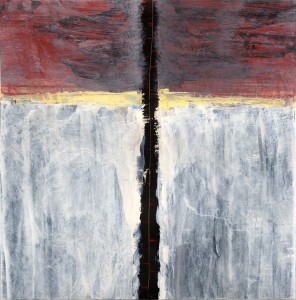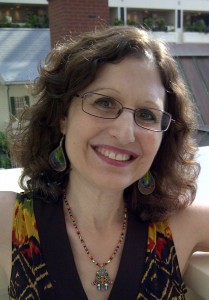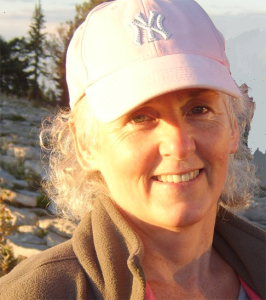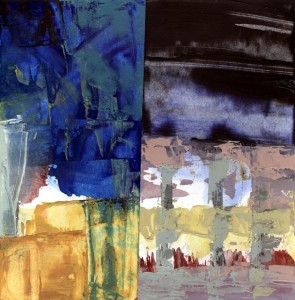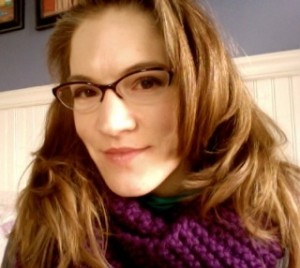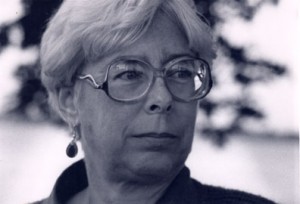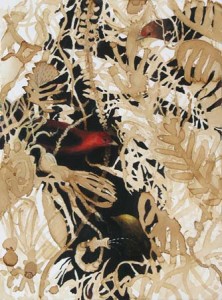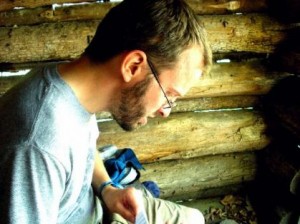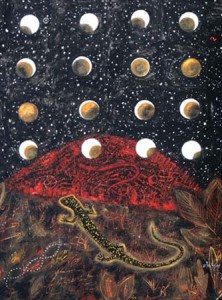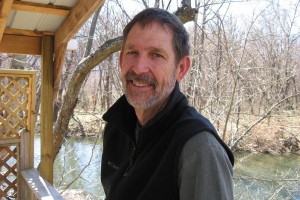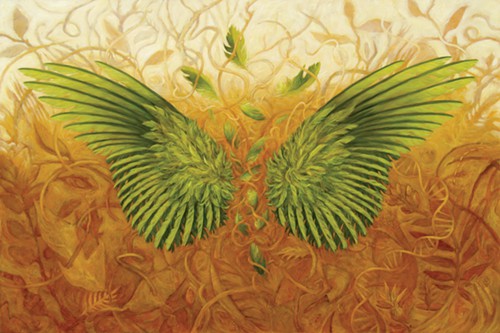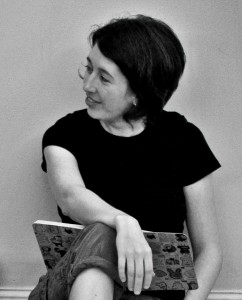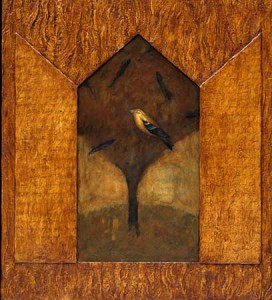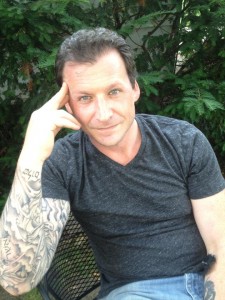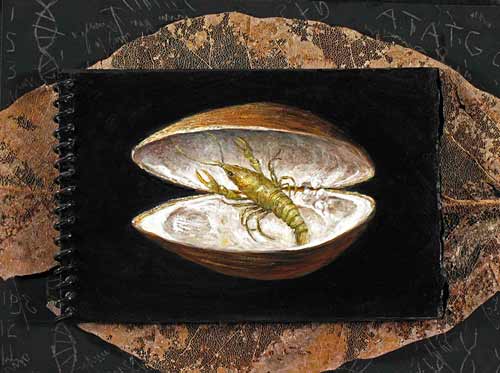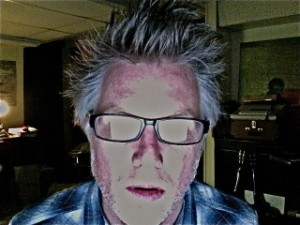
Mary Akers: Hi, Matt. I’ve been thinking a lot about about your essay On Hauntedness–you might even say it has haunted me. I think most people attach a negative emotion to the things that are said to haunt us. We’re haunted, after all, by the things we can’t let go, yes? (Or by the things that won’t let go of us.) So here’s my question: Do you think we are as often haunted by the good things–the good experiences, the windfalls, the out-of-the-blue fortune bursts–as we are by the sad, the poignant, and the regret-filled?
Matt Hart: This seems like a really dynamite place to start, Mary! I think what you’ve brought up here gets at how slippery what we’re talking about is—both in the sense of its being difficult to define and in the sense of its being potentially a sort of slippery slope into doubt, faithlessness, and despair. And yet, weirdly, I think hauntedness in all its forms can be artistically generative and substantial, because it makes us think about (and give form/ shape to) what’s not present, the possibilities of presence, life as it once was or might be, rather than as it is. This is why hauntedness is so important to poetry (and art generally). To address, explore, investigate the things that haunt us requires reveling in and wrestling with the unsayable, ineffable, irrational, contradictory mess of human being.
As for the idea of being haunted by good experiences and “fortune bursts” (I’m stealing the latter for the title of a poem by the way), this is something I’ve thought about quite a bit, but I’m still not sure I’m really all that clear about it. The short answer is that I don’t think we’re really haunted by the joys in the same way we’re haunted by trauma and loss, because the former are about presence while the latter are about absence. This is part of the reason that I ultimately defined hauntedness in the essay as “the perceptible presence of an absence.” One is haunted by shadows, gaps, blank spots, memory, desire, not the life one occupies, and is occupied with, now. We aren’t haunted by the sensible, apprehendable, knowable present, but by the inexplicable, ungraspable, and contingent periphery, the margins and what ifs of what used to be.
To be haunted, then, is to be revisited and/or nagged by something one once had and/or would (still) like to have, but can’t, OR to be repeatedly, unpredictably, and uncontrollably made cognizant of something one never wanted to experience in the first place. The first of these covers losses of various kinds—funny enough, usually nouns—people, places, and things. Whereas the other sort of hauntedness has to do with traumatic or intensely negative experiences that one would like to forget (or quit), but can’t. Both are connected intrinsically to memory, a remembered past (or a possible one), either that one desires to have again (that one misses, or missed out on) or that one would prefer to erase entirely from one’s consciousness.
One question I still have about all of this is whether one can be haunted by the future, by the mere possibility of the occurrence of something one fears or desires. Can one be haunted, for example, by the threat of nuclear war or global warming or the death of a loved one at some time yet to come—how about the thought of one’s own death to come? Or, are such anxieties about the future always based on previous experiences? By my lights, there’s almost nothing more irrational than the future, because it’s largely unpredictable and unknown. In other words, it’s both out of our control and always a surprise. And since hauntedness is often a symptom of irrational desire or irrational fear— complicated by unpredictability—shouldn’t we be haunted by the future as much as the past? Maybe it’s no wonder that in mythology the Fates were three witchy weirdos who designated whether a person would be good or evil and how long he or she would live. The idea of fate is creepy. It makes me think about the phrases, “The future’s bright” and “Things are looking up,” but also The Sex Pistol’s “No Future” and the so-called Doomsday Clock. With DNA mapping we can find out if we have certain genes that make various genetic diseases more likely. Can one be haunted by the knowledge that she has the gene that makes Huntington’s disease possible? And in a literary context how would one make the giant blank of its increased possibility an affecting presence? Historically speaking hasn’t fortune telling and soothsaying always been about alleviating a hauntedness re: what’s to come—or, as Wallace Stevens might put it, “How to live and what to do”?
Mary Akers: The possibility of future haunting–that’s a good question. And if the haunting future is only one of many possible futures, then chances are good you are always going to be haunted by a certain number of things that NEVER COME TO PASS. So, in that case, it isn’t really a future haunting, it’s an alternate universe haunting.
And along those lines, I’ve been reading a book that talks about and analyzes something called the “imposter syndrome.” Basically, it talks about how so many people (creative types especially) feel like imposters. As if we’re just skating along, waiting to be found out. As if, with the next book, someone will come along and shout, “Aha! Here is proof! I knew it all along. You are NOT a writer!” And I’m not talking about posers here, not ACTUAL imposters, I’m talking about talented, successful people with accomplishments and awards and accolades who feel like imposters.It’s really fascinating stuff. Are you haunted by the shadow of success(es)?
Matt Hart: Maybe the “imposter syndrome” is related to the idea of being haunted by the future. Isn’t worrying that we’ll be “found out” and declared a fraud (I first typed “afraid”) a fear of the future, since it projects into the realm of “what if”? And isn’t there also inherent in this the further anxiety that to be “discovered” as talentless by some authority at some time in the future will be an irreversible and damningly forever retroactive value judgment about our personal worth in the world (notice that positive judgments to the contrary don’t carry the same kind of defining force for most of us)?
Perhaps the creative fear of being an imposter is really a matter of our knowing that as artists we hide more than we reveal, even though we’re in the business of making the internal external, the unsayable said, the ineffable sensible. We know that everybody has secrets. But this is a problem, because a lot of creative risk-taking involves bringing the darkness out into the light, making our private selves in various ways more public—if only fictionally. I should note that when I talk about making the private self more public, I don’t mean this in some obviously confessional sense, but rather merely in the sense that art-making is always a matter of deliberately taking something hidden—thoughts, emotions, ideas, memories—and expressing them in contexts where they become vulnerable
Somehow it feels like I’ve wandered a long way from the topic in the meadow, but also sort of not… After publishing five books of poems and lots of reviews, essays and interviews, I’m still worried that I will spill too much the beans (which could be content based, but also a matter of formal ineptitude, myopia, or sheer stupidity), and in them will be the definitive proof of my fraudulence—that I am my doppleganger’s doppleganger, a debacle debacle, both fuck-up and flood…or in Plato’s lingo, an imitation of an imitation of an imitation— which ironically was, for him, art. How’s that for haunted circularity?
Mary Akers: Fortune Bursts and Haunted Circularity. Brilliant.
When my first (ever!) short story was accepted for publication, I was thrilled and excited…until I went to sleep that night. Then I was plagued with imposter dreams. I dreamed that I projectile vomited all over my writing group. I dreamed that my husband had accidentally married the wrong woman. When I emailed a writer friend about it the next morning (someone who has published two books and dozens of short stories), she said, “Yeah. Those never really go away.” I was shocked to my core that someone I perceived as so successful could feel that way, but I’ve since learned how common it is. Have you ever had imposter dreams?
Matt Hart: I (used to?) have a recurring dream of walking down a dirt road in the woods in the middle of the night, and up on the left is an old gray house made of boards, and inside there’s a brightness, like a lantern light burning. The house is ominous, even evil. It radiates hostility and madness, something terribly gone-wrong and utterly sad— a big black negative negative. I know in the dream that whatever’s in there is going to be incredibly painful to me, that it might even kill me. And yet, I’m compelled to go to it, so I keep walking. There are some steps and a little porch. It feels like Tennessee for some reason (where my mother’s family’s from). When I get to the door, my fear is overwhelming, and that’s when I wake up.
In the broad light of day, the dream seems like a goofy Evil Dead type horror movie set, something more to laugh about than to be afraid of. About a year ago, I described it to a friend, and he immediately said that the next time I have the dream I need to make myself stay asleep and open the door—that I need to go inside the house. And when I asked him why he thought this he said simply, “Because it’s home.” I haven’t had the dream since, but before that I was having it four or five times a year. I think the dream is now haunted by me, and of course “haunt” comes from an old Norse word meaning “home.” Anyway, I will open that door the next chance I get.
MA: You totally should open the door. But…now that your psyche knows you are planning to go into the house, I think the need and fear and compulsion to dream it are perhaps gone. The irony of haunting, yes? Once we recognize/accept/stare down the haunting, the haunting stops. (Maybe.)
I used to have a recurring dream in which I was chased by a three-legged dog. I would run and jump and do everything I could to get away, but as soon as I stopped, there he would be, like a Droopy-the-dog cartoon character (but less benign). The thing that was so awful (both in the dream and out) was that the dog wanted and needed me to help him…but there was nothing I could do. And so it was this chasing need of another creature that I couldn’t escape, that was always with me–haunting me. I’ve come to believe that the dream was related to my father’s alcoholism. I wanted to help him so bad. But even as a kid I knew it was beyond the scope of my abilities. After my father died, the one-legged dog dreams went away to haunt someone else.
Matt Hart: That three-legged dog dream is intense, and what might be even more intense is that you figured out a more than plausible interpretation for how it was functioning in your psyche. I also love the notion that the three-legged dog dreams went away to haunt someone else, as if an explanation doesn’t dis/solve hauntedness, but only cures us of the pang that made it haunting to us. The haunting thing is still haunting to someone, so skulks off to find them. Whatever the effects, explanations in some way ruin hauntedness, as it requires for its effectiveness that we “pay no attention to the man behind the curtain.” Once we see hauntedness for what it is, what we thought we saw—misunderstanding—is replaced by understanding and reason. A possibility, a shadow, a question, a stranger is replaced with something clear and familiar, an answer. Questions—especially unanswerable ones—seem more haunted and haunting to me than answers ever are. It’s the chronic unanswerable, un-squarable, and unthinkable things that haunt us.

Mary Akers: I love your description of fraudulent feelings and especially the bit about fear of being a debacle debacle…which, incidentally (or not so incidentally) is the title of your forthcoming poetry book. Very exciting! Can readers expect to find some haunted poems in there? Would you share a poem from it to whet our readers’ appetites? And would you say a bit about the haunting behind the poem?
Debacle Debacle is my new full-length collection of poems that just came out from H_NGM_N Books in May. I don’t know if the poems in it are haunting or not. That’s probably more a thing for others to judge. So much of what poetry is for me has to do with making sense of my experience, of finding a way to deal with something that’s gripped me (and won’t let go) in the first place. Maybe it would be better to say that the poems themselves are a way of taking something inexplicable and giving it a shape I can live with and that fits in with some larger worldview. In that way, poems for me are definitely like your three-legged dog going off to haunt someone else who needs it. My response to a haunted world, a haunting life, is poetry. I think if I wanted answers, I’d have been an engineer or an accountant. Writing poems is a way of containing more or less beautifully the terrors and joys and contradictions of living.
The urge and urgency (and emergency) of what we feel is a kind of noise to sense—an interruption or interference—that plays against and sometimes undermines the mind’s explanation apparatus. The Ka-Blam, the felt need part of being human—which is of necessity connected to the imaginative and empathic parts of who we are—will never align perfectly with the rational, problem-solving part. That’s the part of being human that poetry deals with best. If everything was explicable, unambiguous, and orderly, we wouldn’t need poetry in the first place…
Here’s a poem from Debacle Debacle:
POEM
Now in my infinite.
Now in my fall. Of course,
I mean autumn and the leaves,
mostly the red and brown and orange-gold
leaves. Remember last year?
You raked into mountains. I raked
and I raked, and my tongue was a dog’s.
You laughed and you jumped.
You ran down the driveway, breath steaming visibly
the cold after air. I the sky and you the nerve,
and life a crashing ladder. The apple tree
pinker and weirder than ever. Now beer with black pepper.
Catalytic converter. I love it when the first line
and last line weave together; I think I should read you
a thousand more books. In all other matters,
I am barking and happy. What matters, we get up.
We brush ourselves off.
I chose this poem, because it’s one I’m haunted by. It gives shape to some joys and anxieties that even now remain at the forefront of my mind, having to do with parenting and my daughter growing up a little more everyday—so I’m losing her a little more everyday as I’m getting to know a new version of her a little more everyday—and sometimes I just wanna freeze the frame, and yet we go on. We have to…into the unknown. It’s all very sentimental when I put it this way, but there it is. And sentimentality is another thing that haunts me.
Mary Akers: I’ll be teaching a fiction workshop later this summer and I decided to talk about HOW TO HAUNT YOUR READER because I’ve been so inspired by your thoughts and ideas on this subject. I have yet to write out my lesson plans, but I’ve been thinking about the topic and also asking other authors what they think makes a work “haunting.” I asked Ann Pancake recently, and she said that for her it’s the musicality of (and within) the language. It feels true, that the rhythm and sound of words play a part in a piece feeling “haunting.” The Lydia Davis piece you used in your essay shows words haunted by their arrangement and etymology. Are there other poems you might think of as being “musically” haunting?
Matt Hart: I definitely think music can be haunting. That Lydia Davis piece is a good example, but it can also be as simple as a catchy melody that gets stuck in your head. This morning I woke up with the song “Safer in the Forest/Love Song for Poor Michigan” by La Dispute at the forefront of my mind. I don’t know why. And it wasn’t the whole song that I woke up with, of course, just this little piece of it, “I’ve been watching a slow thaw come around./I’ve been waiting in the cold and hazy blue./I’ve been driving alone out to the edge of town./I’ve been thinking too much of you.” I love the desolation this suggests, the loneliness, the absence of the “you”…that the rhyme is the glue… the thing we get stuck in… Maybe since you only have the words, here, and not the music it doesn’t have the same effect. Maybe it just sounds like song lyrics, i.e. it’s missing something essential, so it doesn’t sound like much of anything. That essential thing might be the actual music, the guitars and drums that go with it, or it might be something I bring to it, a personal, associative landscape of feeling, memory, and imagery that makes it haunting. In contrast to songs, one of the great things about poems is that they are simultaneously the lyrics and the music— no backing band necessary—what they say and how they say it are made of exactly the same words.
Mary Akers: Any famous examples of musically haunting poems you can think of?
Matt Hart: There’s a very famous and, I think, haunting bit from John Berryman’s “Dream Song #29″:
There sat down, once, a thing on Henry’s heart
so heavy, if he had a hundred years
& more, & weeping, sleepless, in all them time
Henry could not make good.
Part of what makes this opening of the poem so musically memorable and haunting is the way the disrupted, distorted syntax, “There sat down, once, a thing on Henry’s heart” and “in all them time” create both surprise and a forcefully awkward cadence that makes Henry’s not being able to “make good” all the more heartbreaking. The Dream Songs are full of these very deliberate syntactical “errors,” interference with ordinary speech to create song. The language is ornamental, textural, antiquated and wildly contemporary all at once—it’s also often melancholy in its grand dishevelment, its drunkenness. One thing the Dream Songs aren’t, however, is ordinary speech. It’s dis-arrangement is its music; it’s disarrangement is a kind of aural derangement. It trades in the prosaic (and even sentimental), “Once there was a thing that sat down on Henry’s heart, and it was so heavy” for something strange and strangely catchy, even a little disturbing as is the case in the poem’s final stanza:
But never did Henry, as he thought he did,
end anyone and hacks her body up
and hide the pieces, where they may be found.
He knows: he went over everyone, & nobody’s missing.
Often he reckons, in the dawn, them up.
Nobody is ever missing.
The hooks in the music of these poems are very often syntactical, grammatical and word choice “problems” of the sort that a writing teacher would encourage a student to fix, “Often he reckons, in the dawn, them up.” It’s kind of intoxicating. Frightening. Even still, what the Dream Songs and a lot of poems are haunted by as much or more than anything else is “plain speech”—saying something clearly for a practical purpose.
Another favorite example of haunting music in a poem for me comes from Ted Berrigan’s “Old Fashioned Air,” which is dedicated to Lee Crabtree, a friend of the author’s, and it’s full of plain speech, but a lot else as well. The poem is a description, almost a litany, of the texture and fabric of one day in the life of Ted Berrigan. It moves from walking through London’s “Battersea Park” to changing “a diaper” to reading “a small poem” to writing a line of poetry. In this way, the poem is a kind of “here’s what I did today” letter to Crabtree, a seemingly ordinary and very simple thing, a continuing conversation with an old friend who’s far away. As it turns out, however, the poem is anything but simple. It begins like this:
I’m living in Battersea, July, 12
1973, not sleeping, reading
Jet noise throbs building fading
Into baby talking, no, “speechifying”
“Ah wob chuk sh’guh!” Glee.
Berrigan’s opening is concrete. First person. He gives us the place, the date, a run together sound and image (“Jet noise throbs building fading,/Into baby talk”) and a feeling of “Glee.” I love all the long “e” sounds here, the constant rhyming and chiming with “Lee Crabtree.” Hard to believe that beyond these first five lines they intensify even more, as Berrigan begins describing a walk he took earlier in the day:
Across there is
Battersea Park
I walked across this morning toward
A truly gorgeous radiant flush;
Sun; fumes of the Battersea
Power Station; London Air;
I walked down long avenues of trees
That leant not ungracefully
Over the concrete walk. Wet green lawn
Open Spaciously
Out on either side of me. I saw
A great flock of geese taking their morning walk
Unhurriedly.
I didn’t hurry either, Lee.
All these long “e”s make for a kind of “ease,” an atmosphere both relaxed and familiar,” which culminates here both in the direct address to Crabtree—Berrigan’s old friend—and in that flock of geese “taking their morning walk/Unhurriedly.” Lee Crabtree is everywhere in the air with the speaker.
A few lines later the poet describes stopping to smoke a cigarette and watch those same geese, now in the water, “As they swam past me in a long dumb graceful cluttered line”— itself a long dumb graceful cluttered line. From there (and oh so leisurely!) he makes his way out of the park, but finding the gate locked he has jump the fence. Then finally, after stopping to pick up a London Times, he makes his way home, where he finds his infant son awake “in his bed” and “Alice asleep in mine.”
I changed
A diaper, read a small poem I’d had
In mind, then thought to write this line:
“Now is Monday morning so, that’s a garbage truck I hear,
not bells”…
And we are back where we started from, Lee, you
& me, alive & well!
Thus, the poem begins and ends with life, “I’m living/ alive & well”—but the poem’s bookends belie its real subject (never explicitly mentioned in the poem), Lee Crabtree’s untimely death by suicide. The poem rambles as the mind rambles, talking talking talking. It uses the direct address and the ordinary rhythms of a particular existence, including deliberate nonsense, awkwardnesses and word play as a way to undo the past and resurrect the dead—or at the very least simply distract the mind from the presence of the absence at hand. The poem’s old-fashioned and sonically beautiful air subtly creates an elegiac atmosphere of mourning and nostalgia that’s so breathless and energetic it’s almost hard to breathe. The repetition of the long “e” sounds throughout the poem, echo the long “e”s in “Lee Crabtree,” who is quite literally now music in the air. That is, until line 20, when, after singing with “ease,” the sound suddenly disappears—the “easiness” disappears—returning only briefly in the final line to rhyme “Lee” with “me,” joining sonically the poem’s speaker to its subject and occasion—the presence to its absence, and the present to the old fashioned air of the past, “here we are back where we started from, Lee, you & me, alive & well. The poet protests too much. The whole poem is Berrigan talking to himself, and thus talking to a ghost, nostalgically singing his friend Lee Crabtree back among the living. And just like the “long dumb graceful cluttered line” of geese in Battersea park, the poem seems to suggest that life too is “a long dumb graceful cluttered line” of other such days, beginning and ending, singing and working, writing and walking.
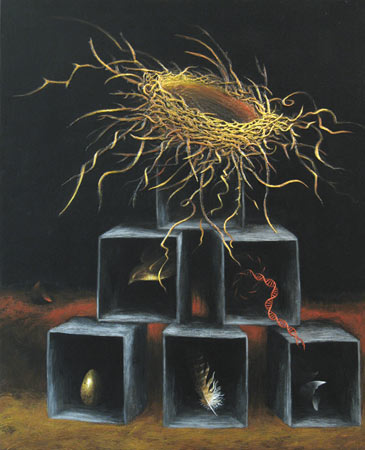
Mary Akers: Ruth Stone often talked about poems that came across the landscape toward her. She could feel them coming and know that she had to run to get to a pen and paper fast and catch the poem before it moved off and found another poet who could capture it. How do you feel about this description of her process? Do you think that is a sort of haunting?
Matt Hart: Honestly, I can’t say I’ve ever experienced the kind of thing that Stone seems to be suggesting, but I like it. It reminds me of Jack Spicer’s idea of the poet as a conduit, where the writer’s job is to tune into the atmosphere and take dictation. If I ever actually experienced something along those lines, I would feel great pressure to get those messages down. To miss even one of them would be to allow a presence perceived (as fleeting as it might be) to become an irreversible absence. How awful to have to consider in the wake of such an experience that perhaps that was the poem one was supposed to write, but blew it by not being quick enough. Perhaps this is a little of what happened with Coleridge’s “Kubla Khan” when he was interrupted by the man from Porlock and lost two thirds of his vision in a dream. That poem is certainly haunted by what’s not in it—what the fragment of it points to, but doesn’t manifest. It’s haunted by Coleridge as well, his opium addiction, his ruin. Nevertheless, it’s one of the most imaginative poems written in English, super witch-crafty:
And all should cry, Beware! Beware!
His flashing eyes, his floating hair!
Weave a circle round him thrice!
My own sense of process, in contrast to what Stone describes—and what Coleridge’s opium fever dream demonstrates—is probably more deliberately a matter sitting down repeatedly to write poems, and there, having nothing in particular to write about, attending to the world as I find it, usually initially via description. Describing things in words is really a way of filtering experience, memory, impressions through one’s own internal mechanism. It never comes out as it is, but as we see it. The world gets made inside us and translated into words. It’s also the one hope any of us has of being original, since each one of us is strange. We all have our own unique way of seeing and re-imagining the world. When that personal weirdness (which to each of us is just normal) comes through in a poem, that’s when we really have something alive…
But I realize that’s all pretty philosophical, and as I hear myself saying it, it sounds pretty silly. The truth is I don’t know where poems come from, how they get written and made, and that’s as haunting to me as anything. It’s unpredictable, and that’s scary if one defines oneself in terms of what one writes and feels at some point in the process compelled to say. I never wait around to be struck—to be inspirited, for poems to come to me—I get to work. I’ve been writing poems long enough now that I trust that paying attention and describing what I attend to will result in more poems. Poetry is a way of being in the world, a human activity that makes the world anew every time we sit down to write it. But there’s also a snowball effect inherent in the language. Words lead to more words. That’s why the dictionary’s so cool. Each and every word leads, via definition, to every other word in the language—but also to ones we haven’t invented yet. And now we’re back to the hauntedness of etymology and the future…
Mary Akers: Yes, the hauntedness of etymology. This is one of the aspects of hauntedness that is so compelling to me. In a way, it’s about not denying the origins of things and the way words and language and our own work develops.
In every poem, the ghost of the first draft poem is still there. And this is what I want to talk about for our final question. In any creation, there are a lot of steps to get to a finished product. These steps used to be an obvious part of the finished product, not hidden from the consumer–like the ribs on the spines of books that showed where they’d been hand-sewn, for instance, or the uneven finger-rings in a hand-thrown piece of pottery. After the industrial revolution, though, it became all about the gleaming finished product, or at least the efficiency of a mechanized process. Then, interestingly enough, craftsmanship and process came back in style, a sort of handmade backlash to industrial impersonalization.
If you were to look at the history of American poetry, can you see a similar shift away from “perfect,” and in favor of “process?”
Matt Hart: Mary, this is a barn-burner of a final question, so bear with me a minute here. I need to untangle some things for myself.
Obviously you’re right that etymology points to process, maybe especially in the way that Hegel talked about history—a sort of historical progression that moves along from thesis to antithesis and finally synthesis, which then becomes a new thesis, etc. But the important part of all that for our purposes is the historical progression jag. Etymology is the study of word origins and the development of words/language over time. In the essay I talked about this a bit, so I won’t re-hash it here, but there does seem to be a sense in which things (including words) are haunted by their origins, histories, and the baggage—both associative and otherwise—that they carry with them from being alive. Words contain remnants of all they once were (e.g. current spellings point back to older ones and other languages) and all they’ve ever meant (definitions accumulate and expand and shift with use). I’m writing an essay on Noise in poetry at the moment, so I looked that word up a few weeks ago. Turns out that it comes from the Latin word (via Old French and Middle English) nausea, meaning seasickness. Isn’t that wild? Noise is about disorientation by sound (which we now know consists of waves), interference, disruption, etc. There’s something woozy-making about intensified experiences with noise. Suddenly Moby–Dick makes so much more sense. That book is one narrative disruption after another, and both Ishmael and Ahab could be said to be “seasick” in different ways—both are haunted by the sea, even in the midst of it. Ishmael’s seasickness manifests itself as Romance, lovesickness, obsession, and (perhaps) unwarranted nostalgia, while Ahab’s manifests as monomania, the brutality of blankness, the nausea of human being … Even reading the book could be said to make one a little seasick. The whale-sized sentences. The waves and waves and waves of language. The graphic depictions of the hunt and slaughter and butchery of the whales. The gossip between both seaman and ships at sea. The sound of the sea in a shell. Noise and noise and noise. Sorry for the fragments there. I’m a little woozy myself. Anyway, yes, words point to the process of their own histories and that’s tangled up in the history of language itself, not to mention culture and value and human development… It gets huge so fast. That’s terrifying. I’m haunted by that.
I don’t know about the whole ideal business in poetry. Certainly poets have tried to make things of ideal Truth and Beauty, but even those truly great poems, like Keats’ “Ode to a Nightingale” are alive because they aren’t perfect in so many ways; Keats’ messy humanity shines through, the irresolvability, the lily on his brow. Do I wake or sleep? There have always been formalists, of course, but any good formalist will tell you that the formal parameters of a sonnet, for example, aren’t meant to be filled in perfectly. Even the people who we think of as the great sonnet writers, like Shakespeare, we’re constantly breaking, if only subtly, the given formal rules. The goal is to make a poem that has a blood stream. That has a ghost, something that cannot be reduced and that we perceive as both there and not there simultaneously.
I do think it’s interesting that this word processing age of ours has in some ways obliterated the rough draft. It’s so easy to “revise as one goes.” I type a few words, and then delete them. They disappear forever. We should be more haunted by this than we are. How many amazing, potentially generative “mistakes” have been turned immediately into ghosts in our writing, since the moment that many of us stopped using typewriters and handwriting drafts of things? How many accidents that could’ve been a breakthrough have been ghosted in the name of proper craft and our own expectations about what a poem is and should be? Sadly, these ghost aren’t perceivable. They never existed at all. How many words have I deleted to write these? I actually often draft poems on an old Remington Noiseless for the very reason that I can’t revise as I go. I can XXXXX things out, but I still have to live with the fact that I did that and the words peak through anyway, still mostly readable and asserting themselves as a constant challenge to my decision to release them from duty.
I think it’s important to remember that craft is essentially a description of everything that’s already been done. It is the set of rules and expectations that have been shown to work and produce results in the past. The problem with this for us as artists in the present is that we revere the great artists of the past not for the ways that they followed the rules, but for the ways they established them. How much revision/editing in the name of craft kills the very alive, very messy, very human poem by making it try and fit some ridiculous ideal of what’s already been done? With the plethora of “craft” that’s being taught I worry that we all start to think that if we learn these rules we’ll be able to make great art. Art history suggests otherwise. One size does not fit all. Certainly craft is hugely important, a foundation, a set of parameters to work with and against, but NEVER within. To work within them is to be ghosting oneself in the image of something already dead. To follow those rules is to be working from inside a coffin. I think it’s good every once in while to be reminded of the ineffable, of the fact that what we’re after is always a territory uncharted, an elusive something, a vague shape in the periphery. As artists, we bring it out into the light, but only partially. At the heart of poetry is something so totally giving and radiant and defiant, both at once, something totally uncontainable, but that every so often, if we’re lucky, we come face to face with, and then it’s gone. The poem hangs around after to remind us.
Mary Akers: Yes, wonderful. Thanks so much, Matt!! This has been great, great fun.
